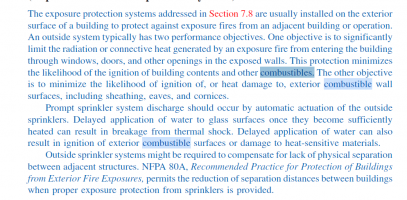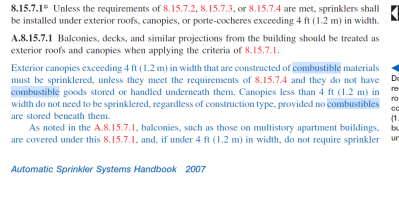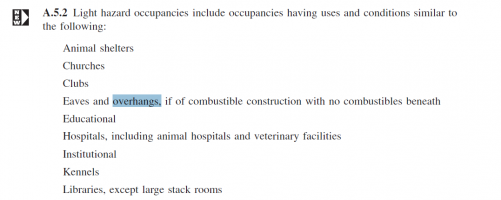TWS2189
REGISTERED
Hi All,
I have a project made of combustible material and we are providing sprinklers in the building. We are needing to comply with NFPA 13 2010 edition. It is a one story building however we have a high roof and a low roof. The high roof has an eave greater than 4' and it is over the lower roof. The lower roof is sprinklered below. The area below the high roof 4' eave is not habitable. Will our 4' overhang be required to have sprinklers?
Thank you
I have a project made of combustible material and we are providing sprinklers in the building. We are needing to comply with NFPA 13 2010 edition. It is a one story building however we have a high roof and a low roof. The high roof has an eave greater than 4' and it is over the lower roof. The lower roof is sprinklered below. The area below the high roof 4' eave is not habitable. Will our 4' overhang be required to have sprinklers?
Thank you




